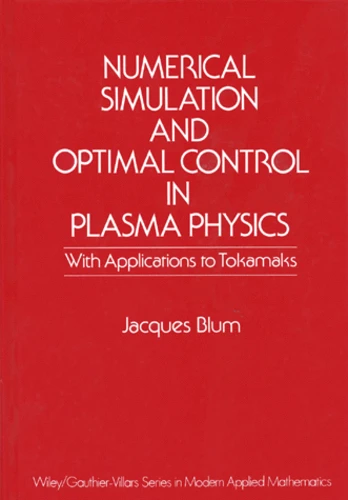Numerical Simulation And Optimal Control In Plasma Physics. With Applications To Tokamaks
Par :Formats :
Définitivement indisponible
Cet article ne peut plus être commandé sur notre site (ouvrage épuisé ou plus commercialisé). Il se peut néanmoins que l'éditeur imprime une nouvelle édition de cet ouvrage à l'avenir. Nous vous invitons donc à revenir périodiquement sur notre site.
- Nombre de pages363
- PrésentationBroché
- Poids0.895 kg
- Dimensions18,9 cm × 27,0 cm × 2,6 cm
- ISBN2-04-016496-0
- EAN9782040164966
- Date de parution01/01/1989
- ÉditeurBordas
Résumé
A Tokamak is an experimental device whose purpose is to confine plasma in a magnetic field in such a way as to control the nuclear fusion of atoms of low mass. The subject of this book is the modelling, numerical simulation and optimal control of equilibrium of the plasma in a Tokamak.
In the first five chapters the author looks at the stationary problem of axisymmetric equilibrium of the plasma. In particular, he studies the modelling and numerical simulation of this problem, the mathematical existence of a solution for a simplified model, and the identification and static control of the boundary of the plasma. The last two chapters treat the evolution of the time-scale of thermal diffusion in the plasma, and look at the problem of stability and dynamic control of displacements of the plasma. The author compares the algorithms available for the numerical solution of these problems for the different types of Tokamak in use or under development.
A Tokamak is an experimental device whose purpose is to confine plasma in a magnetic field in such a way as to control the nuclear fusion of atoms of low mass. The subject of this book is the modelling, numerical simulation and optimal control of equilibrium of the plasma in a Tokamak.
In the first five chapters the author looks at the stationary problem of axisymmetric equilibrium of the plasma. In particular, he studies the modelling and numerical simulation of this problem, the mathematical existence of a solution for a simplified model, and the identification and static control of the boundary of the plasma. The last two chapters treat the evolution of the time-scale of thermal diffusion in the plasma, and look at the problem of stability and dynamic control of displacements of the plasma. The author compares the algorithms available for the numerical solution of these problems for the different types of Tokamak in use or under development.

